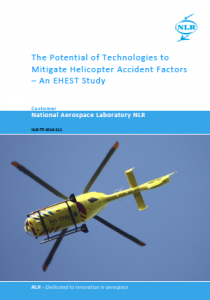
Technology is not high on the list of accident factors, as it is merely the lack of technology that may have led to an accident.
Technology provides a variety of solutions that can contribute to prevent various types of accidents or to increase survivability.
The EHSIT Specialist Team Technology of EHEST was created to assess the potential of existing and emerging technologies to mitigate accident factors.
The ST Technology work consisted of listing technologies and linking them with accident causes and contributing factors, and then to assess the potential of those technologies to mitigate safety issues.
The top 20 safety issues have been identified from EHEST accident analyses. To assess the potential of technologies to mitigate these, the team developed a tool, the so-called technology matrix. The work continued by identifying individual technologies and rating those technologies.
The technology matrix includes 145 technologies, of which 93 have been rated. There are 15 ‘highly promising’ technologies (that jointly can potentially mitigate 11 of the top 20 safety issues), and 50 that are ‘moderately promising’. Five technologies are highly promising for three or more safety issues.
The recommendations from this studies are as follows:
- The industry is invited to consider this study to orient technological developments.
- The regulator is invited to facilitate the introduction of these technologies. - Researchers and universities are encouraged to concentrate their efforts on developing the lacking technologies and the technologies which have a low Technology Readiness Level (TRL).